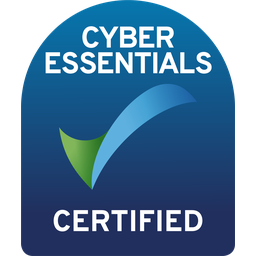As cyber threats grow more sophisticated and the cost of data breaches rises, it is no longer sufficient to treat security as a post-development checkpoint. Enter DevSecOps: a practice that integrates security into every stage of the software development lifecycle. For businesses navigating the complex intersection of speed, innovation, and security, prioritising a robust DevSecOps strategy is not just a recommendation, it is a necessity.
DevSecOps vs DevOps: The evolution of secure development
To understand why DevSecOps should be front of mind, it’s useful to understand how it differs from its predecessor, DevOps. While DevOps focuses on the collaboration between development and operations teams to accelerate software delivery, DevSecOps incorporates security as a shared responsibility from the outset. This evolution means that vulnerabilities are identified and mitigated early, reducing the risk of breaches and compliance failures.
In a traditional DevOps model, security is often siloed, handled by a separate team late in the process. This can result in delays, increased costs, and a reactive approach to security threats. DevSecOps, by contrast, embeds automated security checks, code analysis, and compliance monitoring into continuous integration and delivery pipelines. This seamless integration allows teams to detect issues before they escalate, offering a proactive and agile security culture.
The benefits of DevSecOps
The benefits of DevSecOps are plentiful, making it an attractive proposition for businesses of all sizes and industries. First and foremost, it improves the overall security posture. By catching vulnerabilities early, companies can significantly reduce the attack surface and prevent breaches that could compromise sensitive data and damage reputation.
Additionally, DevSecOps accelerates development timelines. When security is built into the workflow, it eliminates the need for last-minute fixes and lengthy security reviews. This streamlined process not only improves time-to-market but also allows developers to innovate more freely, knowing that security is continuously monitored.
There are also notable cost savings associated with DevSecOps. According to IBM’s 2024 Cost of a Data Breach Report, the average cost of a data breach reached USD $4.88 million. Identifying and fixing vulnerabilities early in the development cycle is significantly less expensive than responding to incidents after deployment. DevSecOps empowers teams to resolve issues before they incur substantial financial and reputational damage.
Finally, a DevSecOps strategy fosters better compliance with regulatory standards. As data protection regulations like GDPR, HIPAA, and PCI-DSS grow more stringent, businesses must demonstrate that security controls are in place throughout the development process. Automated compliance checks help make sure that software consistently meets these requirements, reducing audit fatigue and potential penalties.
DevSecOps best practices
Implementing DevSecOps effectively requires more than just tooling; it demands a cultural shift. Successful DevSecOps initiatives are characterised by strong collaboration across development, security, and operations teams. Everyone must take ownership of security, and silos must be dismantled.
Automation is a key pillar of DevSecOps best practices. Integrating tools for static and dynamic code analysis, container security scanning, and dependency management into CI/CD pipelines allows for continuous security validation. These tools provide immediate feedback to developers, facilitating rapid remediation.
Another crucial element is education. Teams should be equipped with the knowledge and training needed to write secure code and recognise common vulnerabilities such as injection flaws or insecure dependencies. Security champions (individuals within development teams who advocate for secure practices) can help drive this mindset and bridge gaps between teams.
Visibility and monitoring also play an integral role. Centralised logging, real-time threat detection, and incident response capabilities should be in place to respond swiftly to anomalies. This not only protects systems in production but also feeds back into development to strengthen future iterations.
Crafting a DevSecOps strategy that delivers
Creating an effective DevSecOps strategy begins with assessing your businesses current maturity level; this involves asking questions like:
- What are your existing development and security practices?
- Where are the gaps?
From there, set realistic goals that align with business objectives and risk tolerance.
Tool selection should be guided by the specific needs of your environment. Not every tool will suit every team. Consider interoperability, ease of use, and scalability. It’s important to avoid overwhelming developers with too many alerts or overly complex systems that disrupt workflows.
Next, establish clear governance policies. Define what “secure” means for your organisation and how it will be measured. Develop processes for handling vulnerabilities, performing code reviews, and managing secrets. Make sure that compliance requirements are embedded into every phase of the lifecycle.
Finally, measure success. Track metrics such as the number of vulnerabilities detected and resolved, time to remediation, deployment frequency, and incident response time. Continuous improvement should be built into your DevSecOps strategy, with regular retrospectives and updates based on lessons learned.
Are internal DevSecOps teams a strategic advantage?
The short answer is, yes. While some businesses may look to outsource their security functions or rely heavily on third-party tools, the benefits of building a dedicated internal DevSecOps team are vast. Internal teams possess deep knowledge of the company’s specific architecture, workflows, and risk landscape. This contextual understanding allows for more tailored security implementations and quicker decision-making.
An in-house DevSecOps team can also provide consistent security practices across development cycles and business units. Unlike external providers who may lack integration with daily workflows, internal professionals work alongside development and operations teams, embedding security as a core part of the organisational culture.
Building internal capabilities also fosters long-term resilience. It reduces dependency on vendors, mitigates the risk of supply chain vulnerabilities, and creates more flexible, responsive security strategies. It also empowers organisations to retain valuable institutional knowledge and continuously refine their security approach based on internal lessons learned.
Recruiting the right DevSecOps talent, however, remains a challenge in a competitive market. That’s where working with a specialist recruitment partner can make a critical difference.
Why Intaso champions DevSecOps
At Intaso, we understand the critical role that DevSecOps plays in modern software development. As a specialist cybersecurity recruitment firm, we have seen first-hand how businesses that prioritise DevSecOps are better equipped to handle the demands of digital transformation. They move faster, innovate more freely, and sleep easier knowing that their security posture is robust.
We work closely with our clients to identify professionals who not only possess deep technical expertise but also understand the nuances of secure development. Whether you are building a DevSecOps team from scratch or scaling an existing function, our network of skilled professionals can help you achieve your goals.
In an era where security can no longer be an afterthought, DevSecOps is the key to building resilient, agile, and compliant software systems. Now is the time to make it a top priority. Ready to enhance your DevSecOps capability? Contact Intaso to find cyber talent that can drive your secure development strategy forward.








